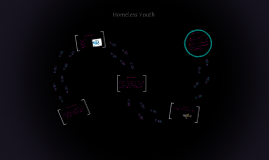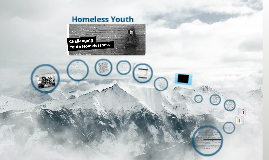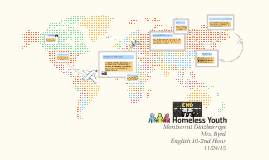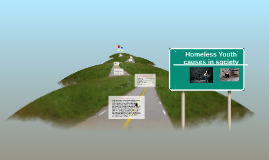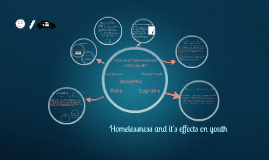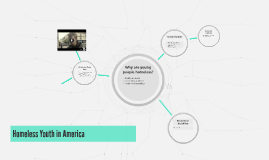Homeless Youth
Transcript: Homelessness among youth in the U.S. is disturbingly common, with an estimated annual presence of at least 5 percent for those between the ages 12 to 17. Research on this special population is sparse, which makes it difficult to capture an accurate and complete picture. However, despite its limitations, recent research describes homeless youth as a large and diverse group. This is one of the more difficult groups to track. How does homelessness affect youth? • Family problems – Disruptive family conditions are the principal reason that young people leave home and many homeless youth leave home. Often, boys exhibit aggression, while girls exhibit depression and passive or withdrawn behavior. Research analyzed what practices contributed to the success of homeless youth and children: • parental closeness with their children and involvement in children’s education; • high-quality relationships with teachers in special intervention support programs; • one-to-one relationships between tutors and children; and • relationships with competent and caring adults. Outreach for homeless youth Race or Ethnicity Defining "homeless youth" Why studying homelessness youth matters Sexual Orientation - Other homeless youth are forced to leave home because of their sexual orientation. As many as 25% of LBGT teens are rejected by their families, and many end up homeless on the streets. • Residential instability – Some youth living in residential or institutional placements become homeless upon discharge. • Economic problems – Some youth may become homeless when their families suffer financial crises Gender & Age Demographics In the long term, homeless youth would benefit from many of the same measures that are needed to fight poverty and homelessness in the adult population, including the provision of affordable housing and employment that pays a living wage. In addition to these basic supports, the child welfare system must make every effort to prevent children from ending up on the streets. What are the academic challenges that Homeless youth face? Sexually Transmitted Infections and Risks The average age of initial sexual intercourse among homeless youth is 12 to 13 years. behavioral Respiratory and Infectious Diseases Medical problems associated with poor and crowded living conditions, such as asthma, tuberculosis, influenza, pneumonia, hepatitis A, lice, and scabies, are more common among homeless youth. Physical Health Emotional and Behavioral Development Homelessness and it's effects on youth Mental Illness The lifetime prevalence of psychiatric disorders in homeless youth is almost twice that of their housed peers. As many as one-third of homeless youth meet criteria for posttraumatic stress disorder (PTSD). Additionally, one study of 95 homeless youth accessing a mobile medical unit found that about 41% met criteria for bipolar disorder; 27.5% for PTSD; 41% for major depressive disorder (MDD); and 29% for attention-deficit/hyperactivity disorder (ADHD) While local studies tend to document that homeless youth generally reflect the racial and ethnic make-up of their local areas, three local studies also report over-representation of members of racial or ethnic minorities relative to the local community. • 41.6% are White, Non-Hispanic • 9.7% are Hispanic • 37% are Black/African-American • 4.5% are other single races; • 7.2% are multiple races Homeless youth face difficulties attending school because of legal guardianship requirements, residency requirements, improper records, and lack of transportation. As a result, homeless youth face severe challenges in obtaining an education and supporting themselves emotionally and financially. academic Risks By focusing on homeless youth my target population is based on and includes youth described with a variety of terms within in research.These terms include "runaways," who have left home without parental permission. "Throwaways," who have been forced to leave home by their parents or "Street youth," who have spent at least some time living on the streets with or without parents due to economic circumstances. Physical Health Implications Substance Abuse Malnutrition Rates of obesity among homeless youth are estimated to be 50%.8 Homeless youth are more reliant on fast food establishments and soup kitchens for their meals. While the food served at these venues alleviates the immediate problem of hunger, it is often high in fat, sugar, and salt content, presenting significant metabolic and cardiovascular risks. High rates of substance use are also associated with youth homelessness. Youth may have been thrown out of their homes due to substance use issues, or may have begun using as a way to cope with homelessness. Substance use rates range from 70% to 90% among homeless youth, with tobacco and alcohol being the most commonly used substances. Cognitive Why do youth become homeless? According to the 2012 Report of Homelessness in Utah it is estimated that between 7-9% of homeless






